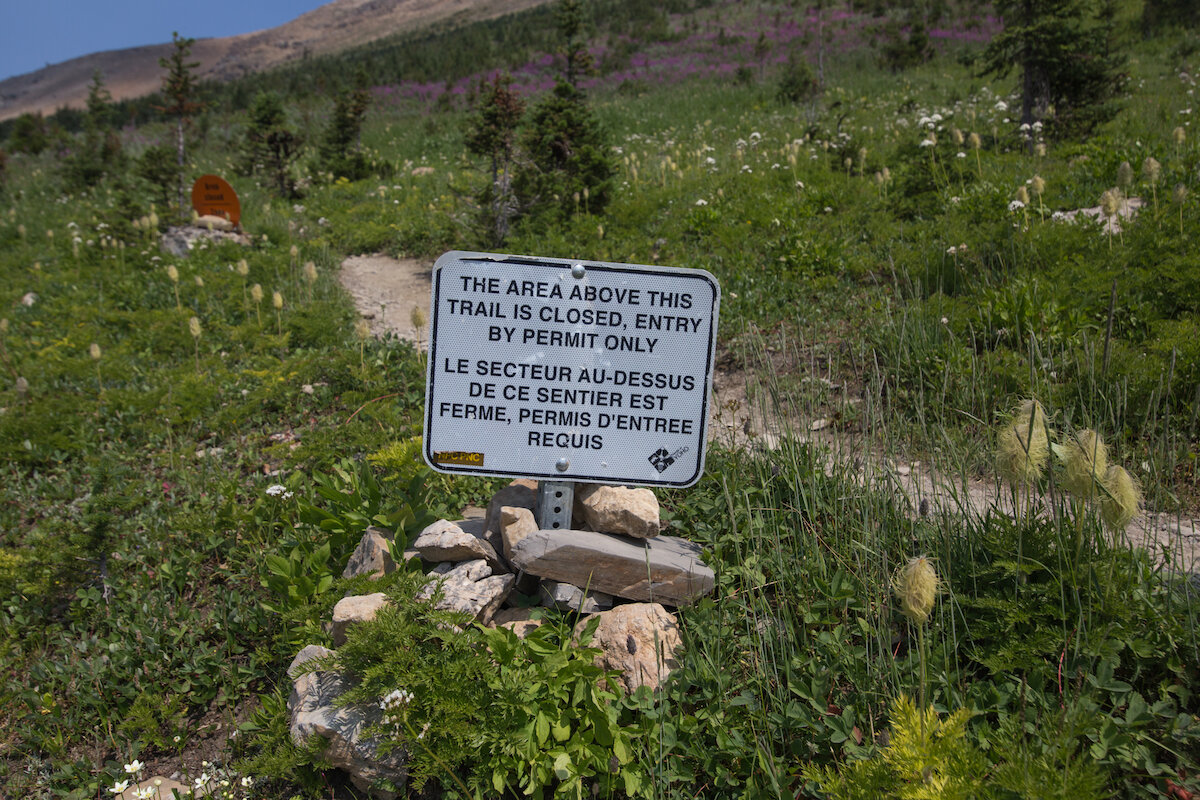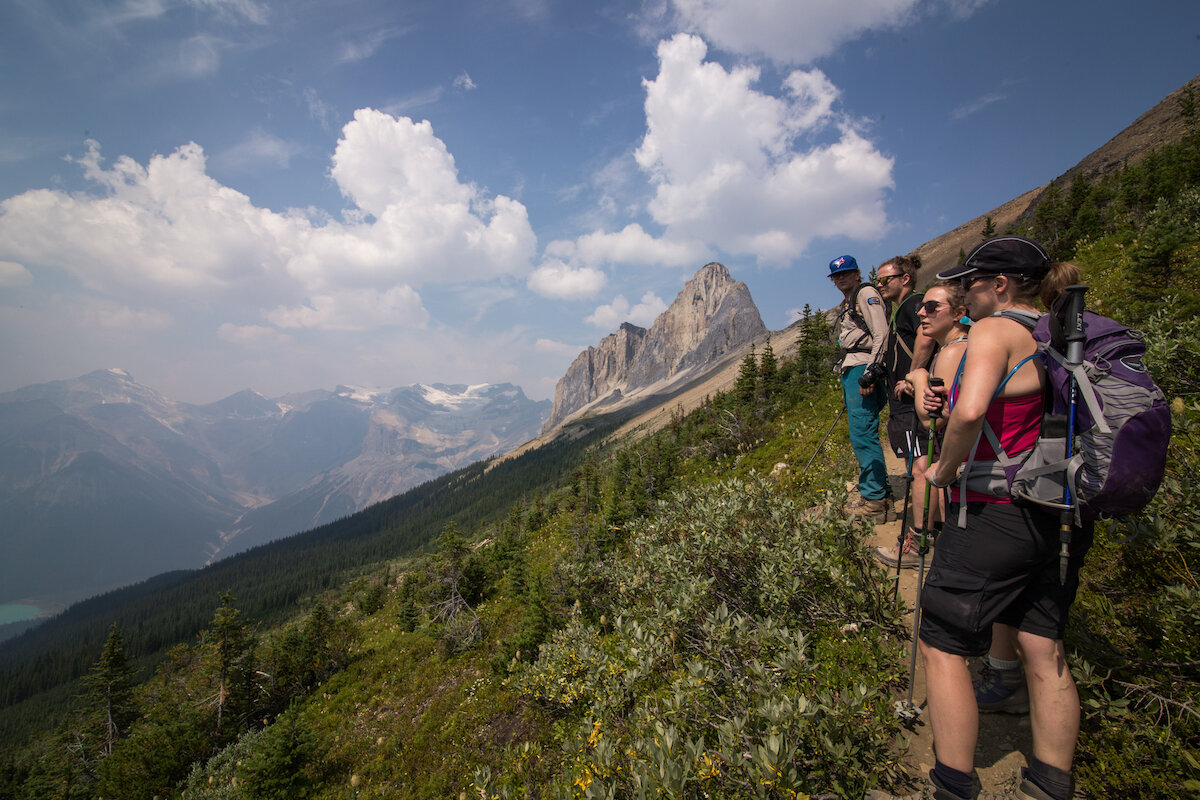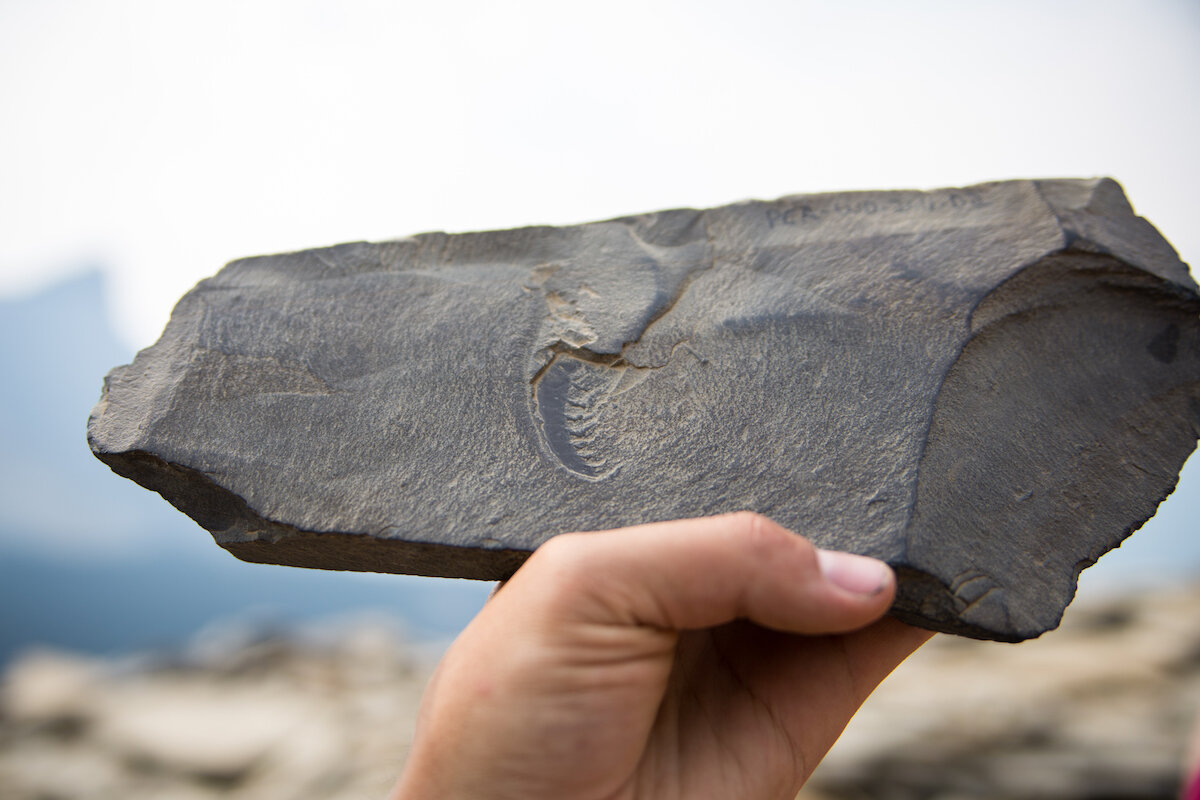WHAT’S SO AMAZING ABOUT THE BURGESS SHALE?
Words by Meghan J. Ward • Photos by Tyler Parker Photography
High up on the flanks of Fossil Ridge in Yoho National Park lies the Burgess Shale Formation, a bed of rock so significant it has been catapulted to international acclaim. Why? Perfectly preserved amidst those layers of black shale are rare and ancient specimens that give us clues about the history of life – and help us make sense of life as we know it today.
Photo Tyler Parker Photography.
Improbability. It is a word that came up many times as our crew of seven ventured through the forested trail that switchbacks and traverses its way up to the Walcott Quarry. Once in a while we’d take a moment to pause, sitting on logs as our interpretive guide, David, walked us through the history of this UNESCO World Heritage Site in an attempt to help us understand its significance. If any incomprehension was at play, it had nothing to do with David and his encyclopedic knowledge of the Middle Cambrian epoch. Wrapping your mind around the existence of 508 million-year-old marine ecosystems exceptionally preserved in a bedrock of shale at 2,286 metres (above the now sea level) is an almost impossible task. Yet, by the end of the day, David had helped us make sense of things, and more, we extracted lessons from the shale we could carry forward in our every day lives.
The discovery of the Burgess Shale by Charles D. Walcott in 1909 was just one of many improbabilities surrounding the fossil bed. Walcott, then the administrator of the Smithsonian Institution and an expert in Cambrian fossils, was perhaps the perfect candidate to come across the specimens and acknowledge their significance, particularly the preservation of soft-bodied organisms. Add onto this the fossilization of these specimens to begin with (this requires perfect conditions), their survival through millennia’s worth of rock building up on top of them, and their preservation through the various geologic upthrusts that created the Rockies, and you’ve got a site that’s a needle in a vast haystack.
Thanks to the Burgess Shale Geoscience Foundation, visitors and residents in the Canadian Rockies have a chance to visit this rare site – Walcott’s very own quarry – otherwise prohibited to public access, to learn from knowledgeable guides, and to hold these fossils in their own hands. As you trace the outlines of a well-defined trilobite or the soft-bodied Pikaia (that, as Wikipedia explains, “shows the essential prerequisites for vertebrates”), you can actually feel the gears turning in your head. So, these are half a billion years old? These are the predecessors to all other life on the planet?
Photos by Tyler Parker Photography
Fortunately, the location of the Walcott Quarry is an apt setting for these kinds of mind-blowing questions. The hike alone takes you past the tranquil water of Yoho Lake, traversing high up amidst stretches of wildflowers and gurgling creeks, and to the upper flanks of Fossil Ridge in Yoho National Park. Contemplating life’s greatest questions in the company of other curious minds, at a lofty elevation overlooking the gorgeous green-blue hues of Emerald Lake, somehow feels right.
On our way down from the quarry I asked David which kind of stories about the Burgess Shale tend to go untold in the public realm. Grasping for a solid answer, he said, “I’m trying to get people to connect on an emotional level. For me, after 300 visits, it’s still sometimes – all the time – like holding the sarcophagus of King Tut in my hands, if I was, say, obsessed with Egyptian history. It is so powerful.”
We hiked in silence until our conversation reignited and went in an interesting direction.
“So many of what I see as problems in the modern world,” theorized David, “are because we spend so much time focusing on our differences…. We spend all this time focusing on the divisions, but if we look at where we come from, we have a common goal and a common good to make this world better for everything and everybody, right? There is this unifying message of the Burgess Shale. Look at Pikaia. Tyrannosaurs rex and you descended from this. I don’t know, that to me is one of the most powerful messages of the Burgess Shale. We all come from here.”
Our group returned to our cars like kids coming home from a school field trip. Our feet were a bit tired from a day full of walking, but our minds had been totally expanded. Lowering our packs, we took one final glimpse up towards Fossil Ridge to retrace our journey and connect once more with the extraordinary creatures we came to know along the way.
ABOUT THE WALCOTT QUARRY HIKE
Elevation Gain: 825 metres
Distance: 22km round-trip
About the Site: First discovered in 1909 by Charles Doolittle Walcott, recent interpretation of these exquisitely preserved 508 million-year-old fossils has influenced the scientific view of the evolution of life on Earth.
→ Learn more about the hike here.
Editor’s Note: This trip was made possible by the Burgess Shale Geoscience Foundation (BSGF). The BSGF in no way influenced the content or reviewed the post before it was published.
Meghan J. Ward is a writer, editor, digital content specialist and all-around storyteller based in Banff, Canada. Meghan loves any sport that takes her up a mountain or into the backcountry, and also enjoys travel and photography.












